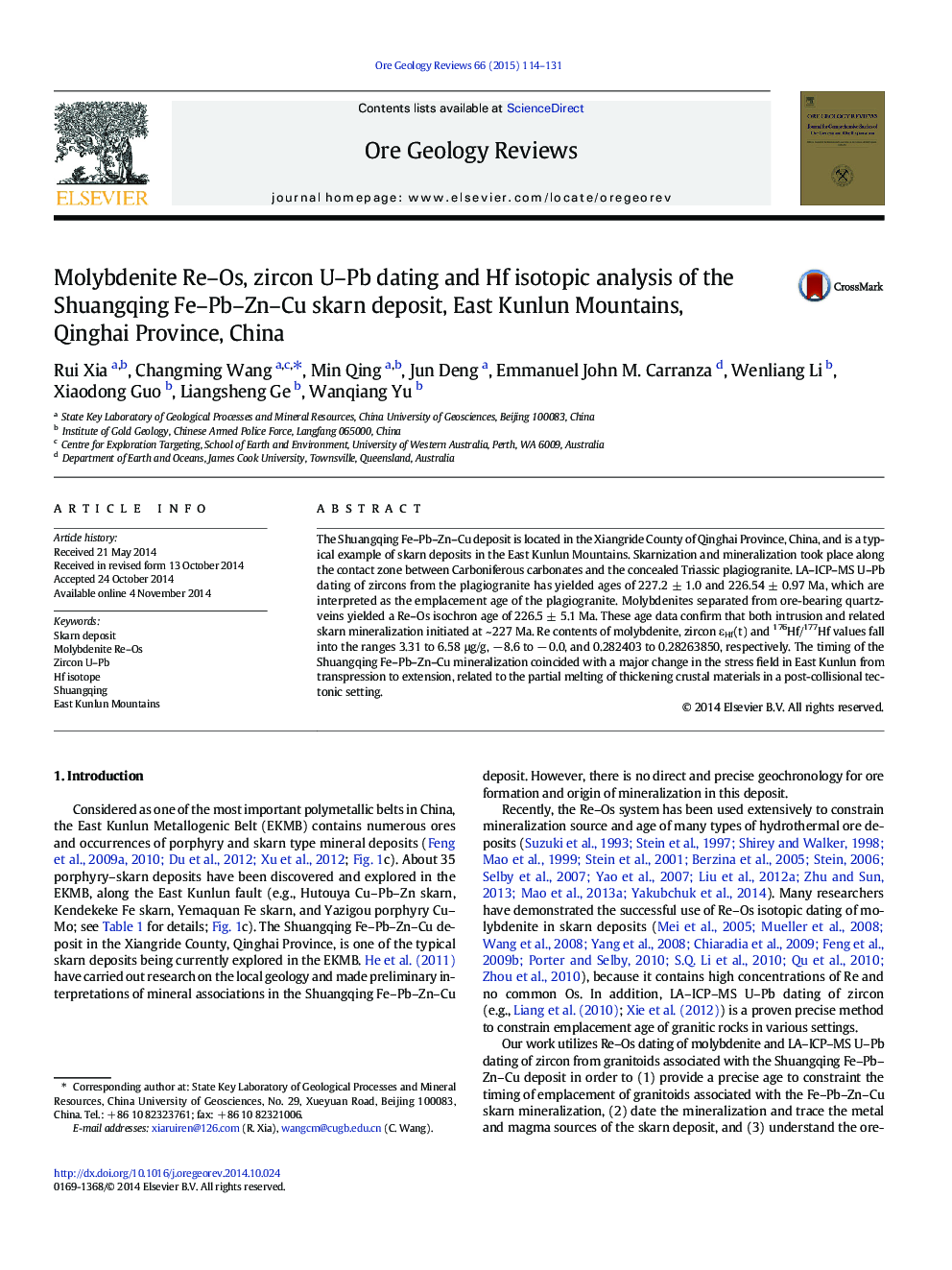| Article ID | Journal | Published Year | Pages | File Type |
|---|---|---|---|---|
| 4697173 | Ore Geology Reviews | 2015 | 18 Pages |
•Molybdenites Re–Os age of 226.5 Ma demonstrate the timing of mineralization.•Zircon U–Pb ages of 227.2 and 226.54 Ma reveal the emplacement age of the plagiogranite.•Mineralization has resulted from the partial melting of the thickened crust.
The Shuangqing Fe–Pb–Zn–Cu deposit is located in the Xiangride County of Qinghai Province, China, and is a typical example of skarn deposits in the East Kunlun Mountains. Skarnization and mineralization took place along the contact zone between Carboniferous carbonates and the concealed Triassic plagiogranite. LA–ICP–MS U–Pb dating of zircons from the plagiogranite has yielded ages of 227.2 ± 1.0 and 226.54 ± 0.97 Ma, which are interpreted as the emplacement age of the plagiogranite. Molybdenites separated from ore-bearing quartz-veins yielded a Re–Os isochron age of 226.5 ± 5.1 Ma. These age data confirm that both intrusion and related skarn mineralization initiated at ~ 227 Ma. Re contents of molybdenite, zircon εHf(t) and 176Hf/177Hf values fall into the ranges 3.31 to 6.58 μg/g, − 8.6 to − 0.0, and 0.282403 to 0.28263850, respectively. The timing of the Shuangqing Fe–Pb–Zn–Cu mineralization coincided with a major change in the stress field in East Kunlun from transpression to extension, related to the partial melting of thickening crustal materials in a post-collisional tectonic setting.
Graphical abstractFigure optionsDownload full-size imageDownload as PowerPoint slide
